This post may contain references or links to products from one or more partners of our parent company and/or subsidiaries of our parent company. For more information, visit this page.
October 26, 2022
Are you as in love with carpet as we are, but don’t know the first thing about the different types of carpet?
We get it! There are so many different types of carpet, and so many different brands.
Everyone loves the cozy, comfortable softness of plush fabric under their bare feet. But if you’ve ever considered installing this type of flooring in your home, you may have been overwhelmed by all the options.
Like a deer frozen in headlights, you may be tempted to just point to the first color you like and then run out of the store.
👉 We reviewed 100+ brands of carpet and found that there was a clear top 5.
Below, we’re going to explain everything you need to know in order to choose the right types of carpet for you.
In this article, we’re going to explain:
- All the elements of a carpet so that you understand what all the different terms mean
- Everything you should consider when looking into carpet types—fiber, pile, backing, you name it
- How to choose the types of carpet that will work best for your lifestyle
- What to look for when comparing different carpet products
- Some pros and cons of carpet in general
- And a whole lot more!
Are you ready for this magic carpet ride? Hop on!
Overview: What are the Different Elements of a Carpet?
Let’s start from the top. There are 4 main elements to every carpet. Together, these determine what your carpet will look like and how it will perform. They are:
- Fiber
- Pile
- Grade
- Backing
When you choose a product, you need to evaluate each of these elements to understand how varying types of carpet will feel and hold up in your home. Here’s a definition of each term.
1. What are Carpet Fibers?
Carpet fiber refers to the material your carpet is made of.
There are both natural and synthetic fiber options, which we’ll break down in a minute.
Different types of carpet have fibers of varying thickness. This is achieved by spinning individual strands of yarn fiber together with others. Each strand is called a ply, and the more of them there are, the thicker each individual fiber of your carpet will be.
For example, in a 3-ply carpet, each fiber of your carpet would be made of 3 yarn strands, spun together, and secured to the backing.
2. What is Carpet Pile?
Carpet pile refers to the way each fiber is arranged on your carpet. This has perhaps the largest impact on how different types of carpet look and perform.
We know: that doesn’t make much sense, but follow us here.
Loop pile carpets are made of fibers that are arranged in (you guessed it) loops—meaning they’re attached to the backing twice. Berber carpet (a type of low, durable carpet) is made of thick, looped fibers, and it’s what’s known as a “low-pile” carpet.
Types of carpets with shorter, denser piles are generally going to be better for high-traffic areas of the home since they’re less likely to compress or be torn out. However, longer piles are much softer.
Big takeaway here: there are a ton of types of carpet piles that we’ll dive into below.
3. What is Carpet Grade?
Carpet grade describes the quality of a carpet. Many factors determine a carpet’s grade: fiber, face weight, and construction. The grade influences how long a carpet lasts.
There isn’t one standard system to indicate different types of carpet grades; it’s more of a self-labeling system. That being said, the highest quality isn’t always necessary or even desired. Residential rental spaces and businesses frequently use lower-grade types of carpeting because they know those rugs will take a massive beating every day. In addition, lower-grade carpets will cost less to replace.
You might be wondering: what exactly is face weight? It’s just a term that refers to the amount of yarn that makes up a given pile. Pro tip: think of it like thread count on sheets. The higher the face weight, the better the carpet.
Best Brands of 2024
4. What is Carpet Backing?
Carpet backing is literally the back of the carpet (but you probably already guessed that, right?)
There are two parts to every carpet backing:
- The primary backing, where the fibers attach.
- The secondary backing, which creates a barrier between the floor and the carpet padding.
There are tons of types of carpet backing, and they can be made from either synthetic or natural materials.
Part I: Types of Carpet Fibers
Ok! Now that we’ve explained the four elements of a carpet, let’s dive into the nitty-gritty details of each—starting with different types of carpet fibers.
Let’s put it this way: your carpet fiber options are practically endless. It’s tempting to feel overwhelmed, but it helps if you know how each fiber feels and reacts to wear and tear and stains.
Also, does durability matter to you? The fiber you choose will play a significant role in how long your carpet lasts. And some fibers make for more environmentally friendly flooring options than others, of course.
Nylon
Nylon is one of the most common synthetic fiber choices for carpets. In fact, while we wouldn’t go so far as to say that most types of carpet these days are made of nylon… there are certainly a fair few.
Why? It’s affordable, attractive, and astonishingly durable. From high-end carpets to budget options like Lees Carpet, you’re going to find a lot of nylon products around.
Mold and mildew don’t stand a chance around nylon, so if you’re looking for the best flooring for basements, this is an excellent fiber to consider. It’s also exceptionally stain-resistant and doesn’t fade.
Nylon tends to create a lot of static, but you can have the carpet treated before installation to eliminate that irritation.
Pro tip: not all nylon is the same. Nylon 6,6, for example, is much more stain-resistant than nylon 6,0—but it’s also harder to clean. Trade-offs!
Polyester
Polyester is very similar to nylon, though it is a bit cheaper. Like nylon, it’s moisture and stain-resistant, and has good wearability. In addition, polyester is surprisingly soft when in thick pile form.
Polyester carpets will get you a lot of value for your money, but it’s not quite as resilient as nylon. It won’t bounce back from wear and tear as easily as nylon does.
On the other hand, lots of polyesters (like PET) can be made from recycled materials!
Cotton
Cotton is ultra-soft. Like, unbelievably soft! It’s completely organic, so it is one of the most expensive carpet types you can buy.
Cotton is easy to clean, although it doesn’t do well with stains. It’s a high-maintenance type of carpet fiber that’s prone to fading, so like most natural carpet types, it does best in a room that won’t see a lot of kid or pet action.
Wool
Wool is one of the best choices you can make for your home carpeting. It is a high-quality natural fiber that’s long-lasting and quite strong. It doesn’t get dirty quickly and is relatively stain-resistant if you clean it often. It also feels fantastic.
The downside, though, is that wool is not an easy type of carpet to maintain. In addition, the colors can fade, so you wouldn’t want to install it in a room that gets a good deal of direct natural light. It also costs around twice what synthetic fiber carpets can cost.
Sisal
Sisal is another type of natural fiber derived from the Sisal cactus plant! Pretty cool, eh? As you might guess, it’s a bit of a rough material—but it makes for a super strong type of carpet fiber.
Sisal also makes an excellent outdoor material since it’s so durable and easy to maintain. That’s why so many people use carpet types like sisal for their patios!
While there are plenty of sisal carpets available, this material is most commonly used in area rugs.
Triexta
Mohawk’s Smartstrand is the most famous carpet to use triexta. It’s a synthetic fiber that’s new-ish to the world of carpets. It’s 37% constructed from (wait for it…) corn! This makes triexta an excellent sustainable, renewable carpet fiber.
Triexta is very similar to nylon or polyester in that it’s durable, mess-resistant, easy to maintain, and very soft. The main drawback is that vacuuming may be challenging because the fibers are very fine.
Triexta carpets have three times the number of fibers as other carpets, making it super dense. That can make it a challenge to push a vacuum cleaner through it.
Olefin (Polypropylene)
This synthetic type of carpet fiber is made mainly from plastic. This makes it a super water-resistant option for areas prone to moisture. It’s also solution-dyed, so it won’t fade in direct sunlight.
Olefin isn’t as resilient as nylon is; it’s also sensitive to friction, so dragging furniture across this carpet won’t treat it well. Finally, certain carpet types made with olefin might have a slightly waxy feeling to the touch.
Part II: Types of Carpet Piles
As we mentioned below, different types of carpet fibers can be attached to the carpet backing in many different ways—creating different types of carpet piles!
The different cuts, heights, and textures you can achieve with different types of carpet piles all suit various needs.
For example, rooms with high traffic levels will need a different pile than rooms designed for comfort that see little traffic. Here’s a crash course in different types of carpet piles.
The 3 Main Types of Carpet Piles
Ok, so before we go any further, we need to explain something. The phrase “carpet pile” has numerous different meanings. To try and keep everything as clear as possible, we’re going to start with the 3 main types of carpet piles before explaining other elements of carpet piles you should know about.

Cut Pile
This type of carpet pile is where the pieces of yarn are cut at a specific height and twisted into tufts. It results in a deliciously soft carpet.
There are different styles within cut pile carpets, which are all unique from each other. Just remember: cut pile carpets can vary in length. There are high cut pile carpets, low cut pile carpets, you name it. These carpet types often boast a luxurious, formal look.
Here are some of the most notable cut pile carpets:
- Plush Carpet: A short, even cut pile makes this type of carpet super smooth. It’s also known as velour carpet.
- Saxony Carpet: Has longer fibers than plush, and each tuft is a bit more twisted. Also very comfortable.
- Frieze Carpet: These cut pile carpets have a big more twist to each tuft, giving it a dense texture. Perhaps the most well-known style of frieze carpet is shag carpet, which has extremely long, thick fibers. Long live the 1970s!
Loop Pile
The opposite of cut pile, loop pile carpets connect each fiber to the backing twice (thus forming fiber loops rather than tufts).
As with cut pile carpets, loop pile carpets can come in many different heights and textures.
Whereas cut pile carpets generally boast a more luxurious look, loop pile carpets are often a bit more understated. That said, they’re generally more durable and might not call for as much maintenance.
Here are some of the most notable loop pile carpets:
- Berber Carpet: A very dense, low type of loop carpet in which the fibers are uncut rather than individually looped. It’s a stalwart of non-residential areas as well as very high-traffic homes. The short fibers are looped very tightly, making them resistant to damage and stains.
- High-low Loop Carpet: Also called multi-level loop, these carpets use loops of varying heights to create specific patterns or textures.
As you might imagine, you won’t find many high-pile loop carpets—because if the loops were too high, things would get caught in them constantly! That’s why deep pile carpets are always cut pile.
Cut-and-Loop Pile
These types of carpets are made from a combination of both cut and looped fibers.
The use of both cut and loop yarns creates a design on the carpet because you can notice the differences in texture. It’s a very trendy and contemporary look, although it has been around for decades. Patterned carpets are often cut and loop.
Carpet Pile Height
Now that we understand the different types of carpet piles, let’s talk about carpet pile height.
The important thing to remember here: different types of carpet piles can come in different heights! That means you can find low cut pile carpet, medium loop pile carpet, high cut-and-loop pile carpet, you name it.
Low Pile Carpet
The “low” here refers to the length of the fibers. Carpet types with low piles have very short fibers—which often means they’re easier to maintain when in loop form (making them a good choice for families with kids and pets).
As we mentioned before, Berber is a type of low pile loop carpet, whereas plush is a type of low cut pile carpet.
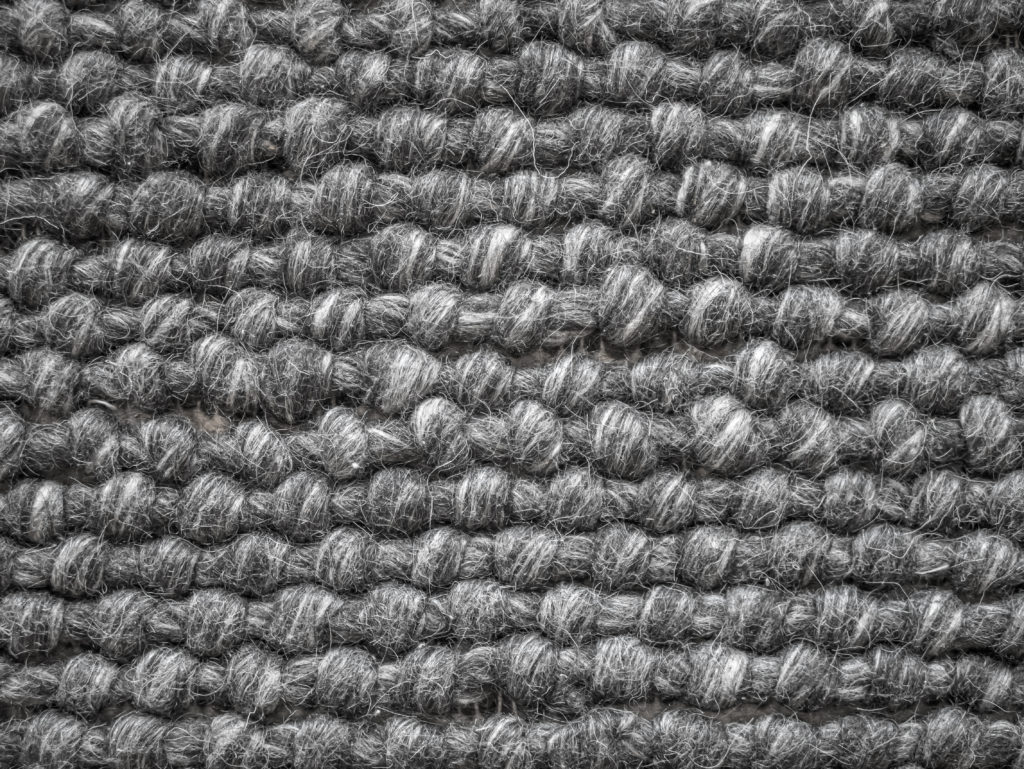
Medium Pile Carpet
As you might imagine, medium pile carpets are a good middle ground between durability and comfort.
High Pile Carpet
Also known as deep pile carpet, these carpets have the longest fibers of the bunch. Shag carpet is a prime example of a deep, cut pile carpet.
It depends entirely on the material, but often, deep pile carpets are great for kids and pets since they don’t show very much wear—they’re just really hard to clean.
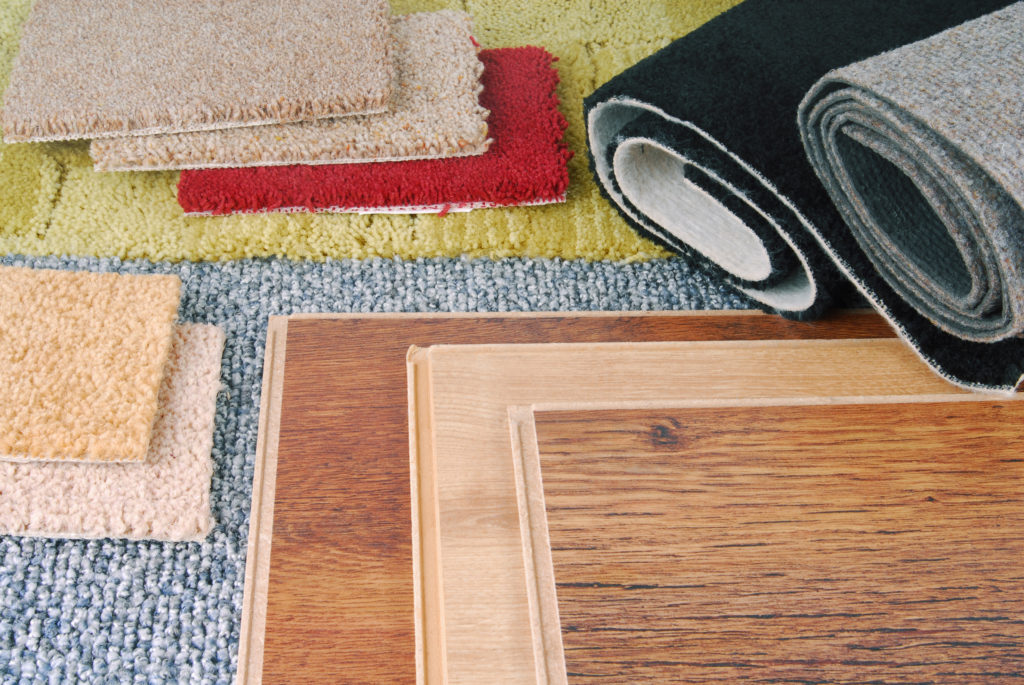
Other Carpet Pile Terms You Should Know
Oh no, friend—we’re not done yet! There are just a couple more types of carpet piles you need to know about.
Twist Pile
Twist pile carpet—also known as cut pile twist—is a type of cut pile carpet in which the yarn has been twisted tightly. It tends to be somewhat coarser, but it has a lot more texture than even-cut pile carpets (like plush carpet). As a result, it shows less wear!
A twist pile is very durable, so it’s excellent for the busiest areas of your home, such as stairs and hallways, and it’s another great choice when kids are around.
Just remember: twisting has nothing to do with pile height—you can have low twist pile carpets, high twist pile carpets, you name it.
That said, twist piles refer only to cut pile carpets.
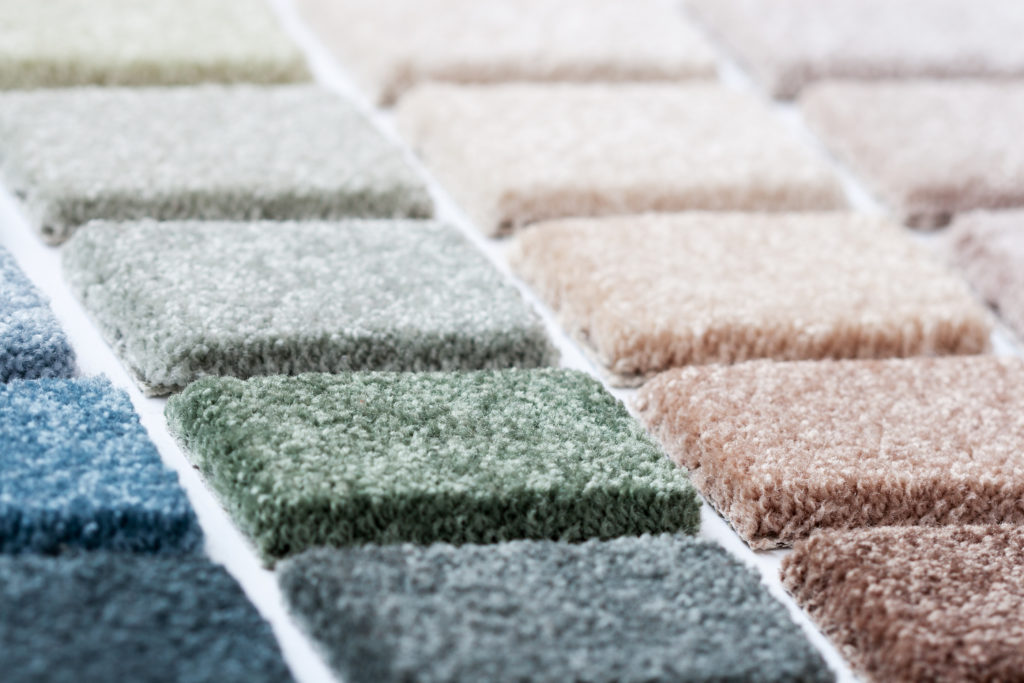
Upright Pile
Upright pile is, unsurprisingly, the opposite of twist pile. It’s going to show a lot more movement and wear. Plush carpet is a common type of low, upright, cut pile carpet.
As we mentioned before, it’s also called velour carpet because you can even see which direction the fibers are being pushed (like on velour!)
Part III: Types of Carpet Grades
Carpet grades are beneficial in determining how you should use different types of carpets. They predict the quality, durability, and lifespan of different types of carpet, which is helpful when you are making your decision.
As we mentioned before, there is no standard system for grading carpets. Rather, carpet grade is a (slightly subjective) rating involving a number of factors: face weight, the number of plys in each fiber, the fiber material itself, etc.
Low-Grade Carpet
You’ll often find low-grade carpets in rental properties. They aren’t designed to last very long, perhaps three to five years. However, they’re lightweight and very inexpensive.
Medium-Grade Carpet
This type of carpet can last longer, at about six to twelve years. It’s a bit heavier and costs up to twice what a low-grade carpet runs.
High-Grade Carpet
These are the longest-lasting types of carpets, at around twelve to twenty years. High-grade carpets are very heavy and are made from good, quality fibers, like wool. They can cost three times the amount of a medium-grade carpet.
Part IV: Types of Carpet Backing
Do not confuse carpet backing with carpet padding; they’re two completely different things!
Carpet backing refers to the material that makes up the base of your carpet. As we mentioned above, most carpets have two backings:
- The primary backing, where the fibers attach.
- The secondary backing, which creates a barrier between the floor and the carpet padding.
While backing is not the most important feature in most carpet types (in terms of performance), you do have several options that you should know about.
Polyurethane
This is one of the most common construction materials for carpet backing. It’s very affordable and also super strong. Polyurethane also does well with moisture. However, it’s a very rough material and may damage surrounding baseboards. That’s because it’s made from a resin that’s applied to the carpet back and hardens into a rubber-like feel.
Soft Plastic Backing
If you are looking for a material that’s very gentle on your floors, consider soft plastic backing. It’s made out of woven plastic. Surprisingly, though, it doesn’t do well with moisture, so avoid humid areas with these types of carpet backings.
Jute Backing
Jute is a natural fiber woven from the jute plant. It’s one of the most durable fibers, but unfortunately, it’s not always readily available. Because jute is a natural material, it’s an excellent choice if you’re concerned about chemicals used in carpets.
Other Types of Carpet Variables to Be Aware Of
You’ll stumble across several other descriptions and buzz words when you’re shopping for different types of carpet. Some of these contribute to quality, while others affect feel or price.
Pile Density
This measures how much fiber is in a cubic yard. It indicates how close individual tufts or loops of yarn are to each other. The more tightly packed the fibers are, the higher the density. You can feel the thickness when you run your hands through the carpet.
Generally speaking, the higher the density, the more durable the carpet is.
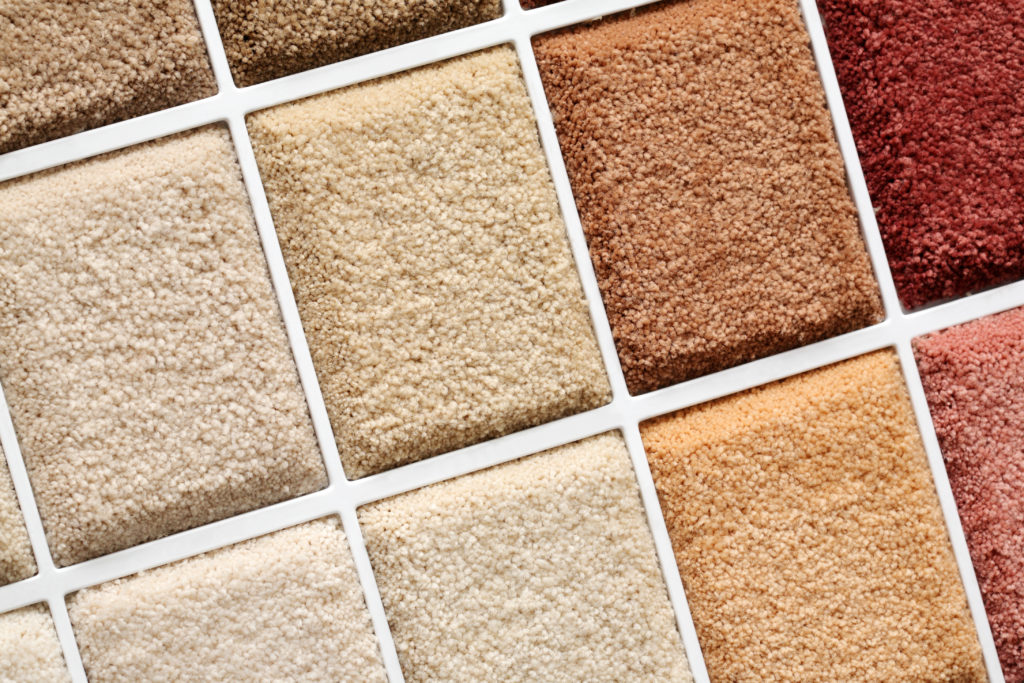
Face Weight
We mentioned face weight before, but now that you have some more context, we can explain it a bit more thoroughly.
Simply put, face weight is just pile density that has been measured in ounces. Remember, though, this includes only the fibers (and not the backing). If everything else is the same on two different types of carpets, the one with the higher face weight is the better choice.
Twist Level
This measures how many twists are in each one-inch fiber strand. The more twists a strand has, the more durable the carpet is. If a twist level is too low, the carpet can unravel (though obviously, that only applies to cut pile carpets).
Total Weight
Total weight is very similar to face weight, but includes the backing. The average total weight for carpets runs between 35–60 ounces.
PAR Rating
The par rating will reveal the carpet’s durability, based on an average family of four. It works on a scale of one to five, and the higher the carpet rates, the better it is. PAR is an acronym that stands for Performance, Appearance, Retention. The more you know!
Carpet Padding
This is a material that goes between your carpet and your subfloor. What is subflooring? It’s just the raw wood or concrete underneath your, you know, actual floor.
There are different types of carpet padding available, but just like, say, an underlayment for vinyl flooring, your need for carpet padding (or lack thereof) comes down to a lot of different variables—your carpet, your subflooring, your home’s moisture level, etc.
Part V: Choosing the Best Types of Carpet for Your Needs
Alright! Now that we know all about different types of carpets (and how they perform), let’s talk about choosing one that’s suitable for your needs.
Just remember: assess your needs as realistically as possible, because carpeting is an investment. You don’t want to have any regrets down the road!
Consider How You Use the Space
Is your carpet going in a family room, or in a rarely-used sitting room? Consider the activities and traffic patterns your home sees, and take ease of cleaning into consideration.
For example, if you have kids that play in your living room, you’re going to want a carpet that’s both durable and easy to clean. If you have a shoes-off house and no pets, maybe cleaning isn’t as important—so a higher-pile carpet would work for you.
Think of it this way: lots of people put vinyl plank flooring on stairs because stairs see a ton of traffic, and only the best vinyl plank flooring brands can stand up to it. Do you really want a deep, cut-pile carpet there? It’ll get chewed up and be impossible to clean!
Consider Your Comfort Needs
Similarly, many people debating between carpet vs. hardwood in bedrooms end up with carpet, because comfort is more important in a sleeping space than high-traffic performance. And when it comes to comfort, not even the best hardwood floor brands can compete.
Sure, the best laminate flooring is heavy-duty—but you’ll freeze your toes off walking on it in the middle of winter! When it comes to coziness, there really is no debate between carpet vs. hardwood or carpet vs. laminate.
Consider Different Types of Carpet Patterns (and Colors!)
What are you looking for from your carpet? If you want to show off your furniture, textured carpet makes a nice choice. It also conceals dirt well so that you can go longer between cleanings.
Or do you want to open up your space more? Play with light colors to trick the eye. On the other hand, dark colors are excellent for hiding spills and other dirt.
Picking your carpet color can feel stressful because there are so many options. Bring home some carpet samples of colors you have in mind. This is a perfect way to test how each shade will look in the natural light of your room, as well as next to your furniture and walls.
Fun fact: you can also buy peel-and-stick carpet tiles for a more temporary solution, or to try out some different textures. And if you don’t know how to install carpet tiles, they’re a super easy DIY project!
What are the Best Types of Carpet for Each Room in The House?
Obviously, this comes down to your specific needs and tastes. However, the best flooring for each room doesn’t usually vary that much—so here are a couple of quick tips.
- Living rooms generally see a lot of traffic, so they require types of carpet that won’t show wear and tear as easily. For that, we’d recommend a low pile loop carpet like Berber. Synthetic fibers are the easiest for cleaning up accidents and are also quite durable.
- Master bedrooms, on the other hand, often require something cozy and soft. Medium or deep cut pile carpets (like saxony) are wonderful for a luxurious bedroom. Consider a soft fabric, like wool or nylon.
- Kids’ bedrooms are a different story. You’ll likely want something synthetic with shorter or medium piles to combine comfort with ease of maintenance.
Part VI: What to Look for When Buying Different Types of Carpet
You now know what pile and fiber can do for a carpet, but that still doesn’t mean you’re quite ready to make your purchase. Each brand will differ; no two nylon short pile carpets are the same. So, how do you choose between similar carpet types?
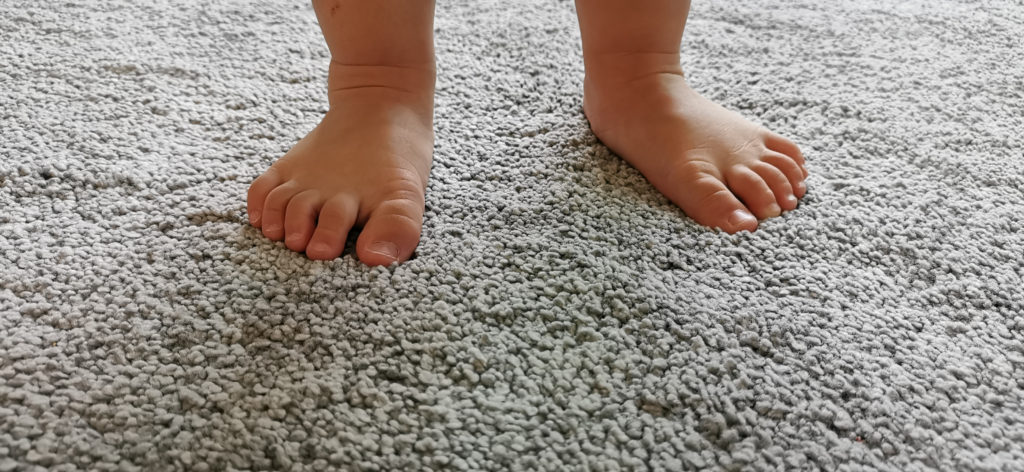
Signs of a Quality Carpet
When looking for quality, the main components you want to focus on are fiber, face weight, twist (if applicable), and pile density.
A heavier weight is more durable, so be sure that you get a minimum of 34–40 ounces. Tuft twists also add to durability, so remember that 5 twists or higher is ideal. And finally, good quality carpets have high pile density, with 2000 as a minimum number.
The Maintenance Requirements for Different Carpet Types
Some carpet types are irresistible… but then you discover that they need frequent deep cleaning regularly. Or that vacuuming is a challenging task through the dense, high pile. Is it still tempting to you?
Being able to care for your carpet properly is an essential part of deciding if a type of carpet is the right one for you. If you give your carpet the level of care it requires, you will keep it looking new for a long time. You must evaluate if that’s a realistic commitment you can make; otherwise, you’re just wasting your money.
Understand Your Carpet Warranty
Warranties can be wonderful, but they aren’t always straightforward or forgiving.
They frequently have stringent guidelines regarding your new carpet’s installation or maintenance. For example, some brands will void your warranty unless you install a specific carpet padding brand. So be sure ahead of time exactly what your warranty’s demands are if you need help from the company.
The Pros and Cons of Carpet
As much as we love carpet, we also wouldn’t recommend installing it in every room of your home. Just as with all types of flooring, from the most luxurious hardwood species to the most inexpensive fake wood flooring, carpet has its own pros and cons!
Pro: Carpet is Fairly Inexpensive to Install
When you compare the cost to install carpet vs. the cost to install hardwood floors, one thing will jump out at you right away: carpet is far less expensive to put in than most types of wood flooring.
Is the cost to install carpet as low as the cost to install vinyl plank flooring or the cost to install laminate flooring? Generally not. But again: it depends on the product.
All of that to say, while carpet isn’t dirt cheap, it is far less pricey to put in than some other floors. That’s why so many people Google the cost to replace carpet with hardwood… and then stick with carpet
Pro: Carpet is Quiet
There’s a reason that many sound studios carpet their walls—most types of carpet absorb sound really well.
This is also one reason why carpet is so fantastic in homes, especially upstairs. Carpet contributes to a quieter home by absorbing many noises, preventing echoing in larger rooms, and muffling noisy footsteps.
Pro: Carpet is Soft and Comfy
Of course, not all types of carpets are soft. However, if you are looking for a bit of softness underfoot, carpet is really your only option. It makes the entire room seem warmer and more welcoming, softening the edges where wood floors would typically be.
Pro: Carpet Hides Dirt
When you have a mess on your hardwood floor, there’s no hiding it. It’s in plain sight for all to see. However, you have more leeway with carpet since dirt can settle down between the tufts of fabric. You see dust buildup immediately on wood, but most types of carpet hide it for a while before you need to take action.
Does that make it some of the best flooring for kitchens or a great mudroom flooring option? Absolutely not. But if you’re like us, you don’t have time to clean every day, either.
Con: Carpet is Not Easy to Install
Make no mistake: carpet is one DIY flooring project to avoid. While many of today’s hard surfaces come as click together flooring, carpet is far too complex for the untrained person, and you risk voiding your warranty if you do it poorly
However: for trained installers, putting in most types of carpet is a breeze (seriously). That’s just one of many reasons we’d recommend buying your carpet from a top-rated flooring store in your area rather than from a big box store that uses shady 3rd party installers.
Con: Carpet Doesn’t Age Well
If you are looking for long-term flooring, carpet might not be the way to go. Unlike wood, which can be refinished, carpet fibers will wear down over time—especially in a high-traffic location. Some carpet types will last longer than others, but at the end of the day, you’ll have to replace it eventually.
Hardwood, on the other hand, can be refinished indefinitely—even the best engineered wood flooring.
Con: Some Carpet Types are High Maintenance
At the very least, carpets require vacuuming to keep them in decent shape. But, of course, they also benefit from either a professional cleaning or a good run-in with a steam cleaner from time to time. And, of course, stain treatments can be a headache. If you are looking for super-easy-to-maintain surfaces, you might be better off with something like waterproof laminate flooring or rigid-core luxury vinyl.
Part VII: Final Things to Consider When Purchasing Carpet
Now you are fully aware of… well, just about everything having to do with different types of carpets, let’s talk about the buying process. Specifically, what are some other things you should consider when making your purchase?
Choosing the Right Padding
It’s important to pick the right pad thickness and density for the specific types of carpet you purchase. The standard thickness for most carpet pads is 7/16”. However, some types of carpets (such as Berber and short-pile) call for thinner carpet pads.
As we said earlier, your padding will depend entirely on the carpet you choose and the specific needs of your home and situation. Do you need a carpet pad that’s suitable for pets? Moisture? Those features will very much affect the pad you buy.
So: be sure you do your research, and only rely on the salesperson if they actually work at a real flooring store. Box store clerks are not flooring experts.
Again (and we can’t stress this enough) find a flooring store near you rather than going to Home Depot or Lowes. You will be so, so, so glad you did.
Staying on Budget
Before you set out shopping, get an estimate for a realistic idea of what carpet will cost in the space you need it. You can look online for carpet cost calculators that will give you a very rough estimate. From there, you can determine a price range that you can swing, guiding you to the right fabrics and styles.
Don’t forget to factor in installation and padding costs!
Talk With Your Installer
Get an estimate for what it will cost the company to install your new carpet for you. Some places include it for free. Even if you do have to pay extra for installation, it is one hundred percent worth it. Like we said, carpet is not the easiest flooring to install—and it makes no difference what types of carpet you buy.
A professional is better suited to take care of it for you since they have the tools and the expertise. Do, however, verify that your installer is experienced. You don’t want to be left with any lumps or visible seams when it’s all done.
Consider Going Green with Your Carpet
Carpets and padding are notorious for emitting VOCs, or volatile organic compounds. These are the harmful gasses that are present in many industrially-made materials, including floors.
These days, we always recommend buying low-VOC flooring. Luckily, low-VOC carpet options do exist, and they’re not limited to natural fibers like wool or cotton (although they are some of the best).
To ensure you are getting a real green deal, check out programs that highlight eco-friendly flooring practices, such as a FloorScore or GreenGuard certification.
Fun fact: you can even find low-VOC vinyl flooring these days. Crazy, right?
Conclusion
Wow! That was a heck of a whirlwind through the wide world of carpet types!
We sure hope you found everything you were looking for, and learned all you needed to feel comfortable exploring new types of carpet for your home.
Carpets are essential in making a house feel truly like a home. So don’t wait! If you feel that carpet is the best flooring for you, take the first step today and contact a flooring store near you; they’ll help you with everything.
Otherwise, feel free to read through some of the resources below for more info on flooring types and brands.
Whatever the case, we hope this was helpful, and best of luck on your floor buying journey!
- 15 Beautiful and Affordable Outdoor Flooring Options
- The 8 Best Types of Wood Flooring For Dogs
- Water-Resistant Wood Flooring 101
- Vinyl Plank vs. Laminate Comparison: Which is Better?
- Advantages & Disadvantages of Vinyl Plank Flooring
- Best Vinyl Plank Flooring Brands: 2022 Guide
- LifeProof Vinyl Flooring Reviews: Is It Worth It?
- Engineered Hardwood vs. Laminate: Side-by-Side Comparison
- SPC & WPC Flooring: What They Are, Pros/Cons & Best Brands
- COREtec Flooring Reviews: Plus, Pro Plus, & More
- Laminate Flooring Pros and Cons: The 2022 Guide
- The Best Flooring for Dogs & Other Pets: 7 Great Options
- Best Waterproof Laminate Flooring Brands (Updated Guide)
About The Author

Courtney Daily
January 7, 2022
Courtney is a freelance writer who wears many other hats: kindergarten teacher by day, Broadway diva in the shower. She is a transplant Hoosier who originated in New England. When she isn't writing in her spare time, you will find her reading history books, arguing with her latest knitting project, or being beaten by her kids at most games.
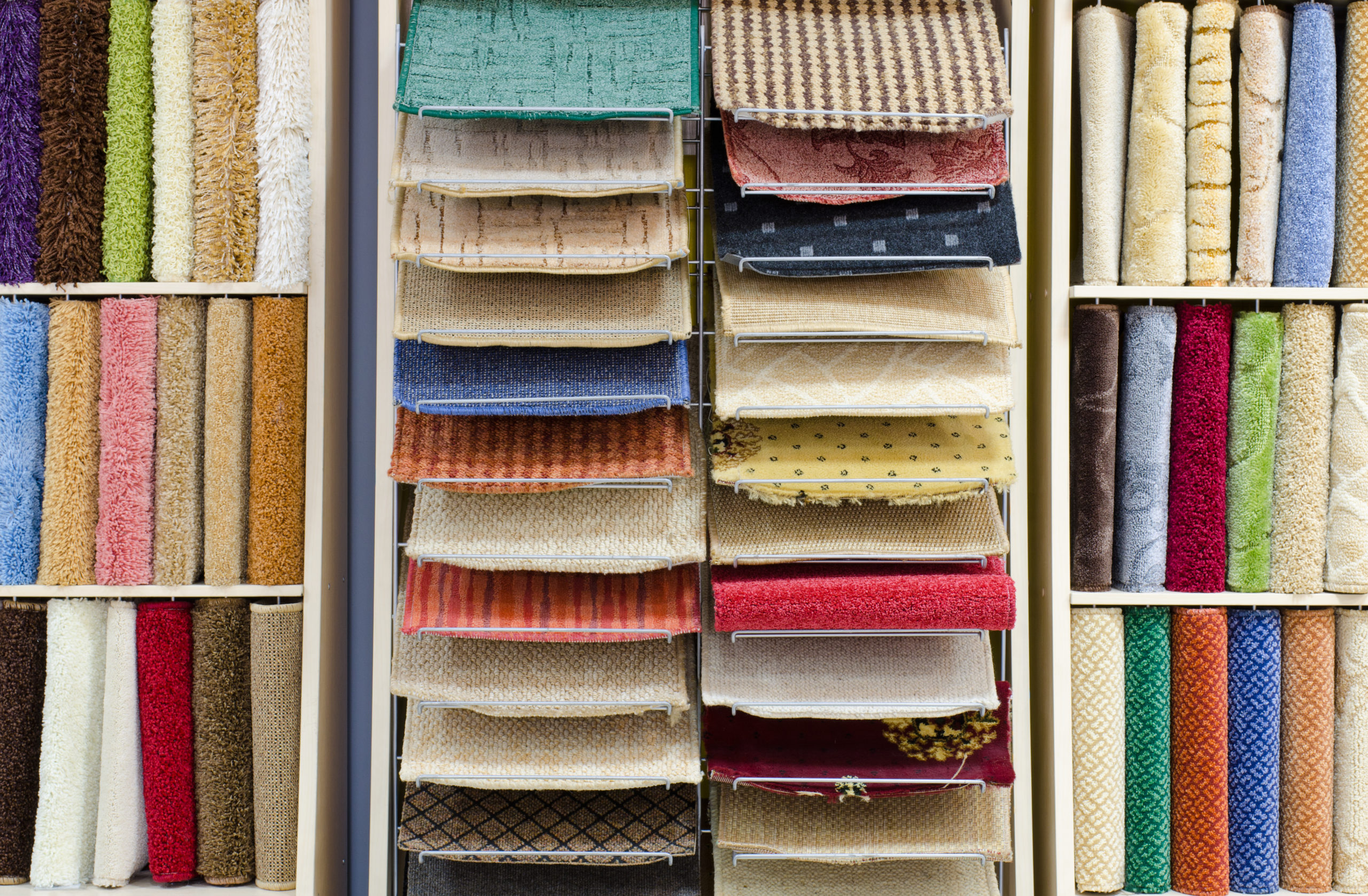
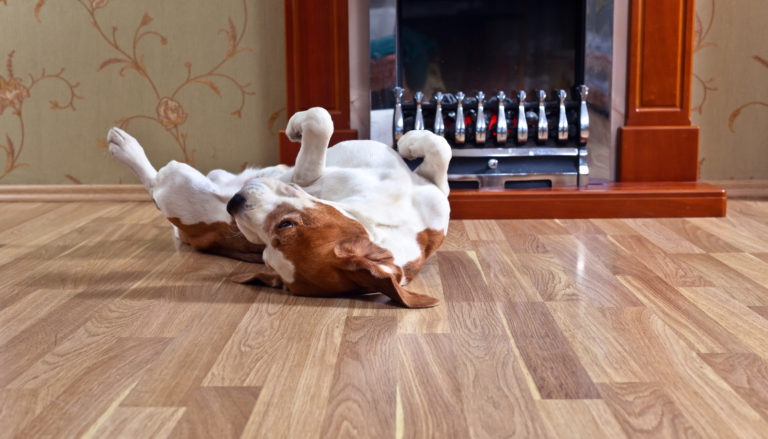

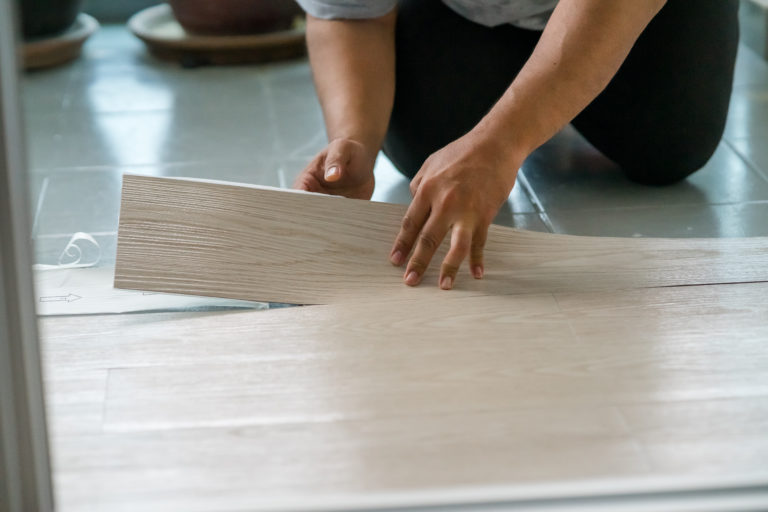

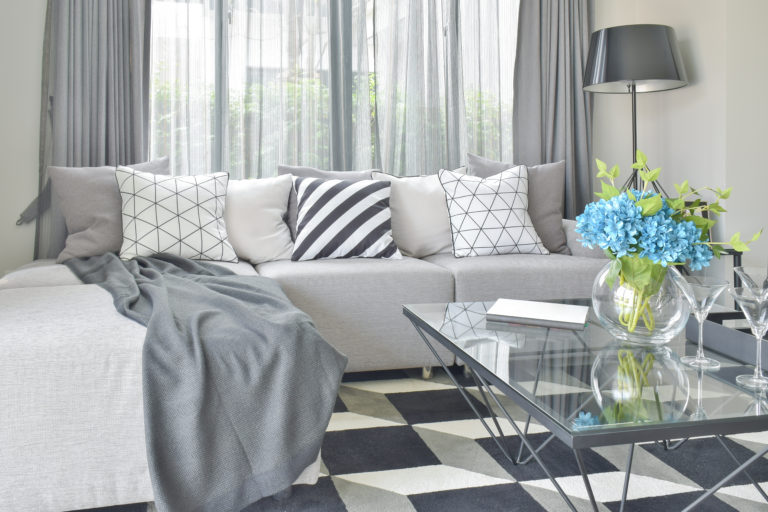

4 comments
Moshells
This is a very detailed article. Thank you for all the information about different types of carpets. This helps me choose what I would buy for my new apartment.
Rachel
Thank you so much for breaking all this down! It is so overwhelming and I feel more confident now that I understand all the different carpet components.
Nat
Hi Courtney,
this is really helpful .i was learning about carpet fabric then i found you and this: https://carpetcanyon.com/what-carpet-fabric-is-best/
now who should i listen ? cause its confusing .
please replay 🙂
Bo Arnold
Hi Nat, Bo stepping in for Courtney here. There are a LOT of resources out there, and it can be confusing.
That being said, there is no 100% correct choice for the best type of carpet—it’s all down to what’s best for you! It seems like you’ve really done your research—if you still have questions on what type of carpet best suits your needs, reach out to your local flooring expert. You can find a directory here: https://www.flooringstores.com/
Good luck on your floor buying journey!